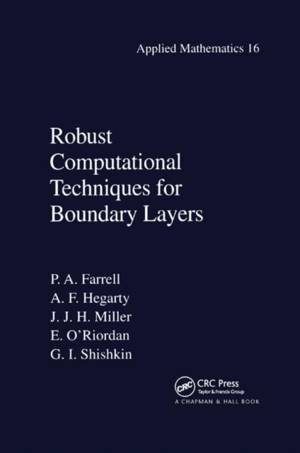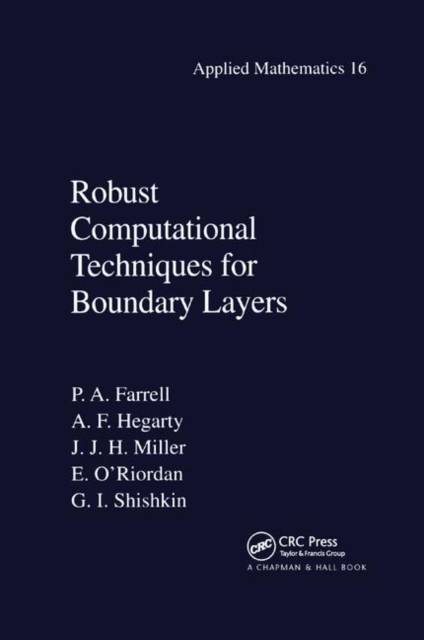
- Afhalen na 1 uur in een winkel met voorraad
- Gratis thuislevering in België vanaf € 30
- Ruim aanbod met 7 miljoen producten
- Afhalen na 1 uur in een winkel met voorraad
- Gratis thuislevering in België vanaf € 30
- Ruim aanbod met 7 miljoen producten
Zoeken
Robust Computational Techniques for Boundary Layers
Paul Farrell, Alan Hegarty, John M Miller, Eugene O'Riordan, Grigory I Shishkin
€ 126,95
+ 253 punten
Uitvoering
Omschrijving
Current standard numerical methods are of little use in solving mathematical problems involving boundary layers. In Robust Computational Techniques for Boundary Layers, the authors construct numerical methods for solving problems involving differential equations that have non-smooth solutions with singularities related to boundary layers. They present a new numerical technique that provides precise results in the boundary layer regions for the problems discussed in the book. They show that this technique can be adapted in a natural way to a real flow problem, and that it can be used to construct benchmark solutions for comparison with solutions found using other numerical techniques. Focusing on robustness, simplicity, and wide applicability rather than on optimality, Robust Computational Techniques for Boundary Layers provides readers with an understanding of the underlying principles and the essential components needed for the construction of numerical methods for boundary layer problems. It explains the fundamental ideas through physical insight, model problems, and computational experiments and gives details of the linear solvers used in the computations so that readers can implement the methods and reproduce the numerical results.
Specificaties
Betrokkenen
- Auteur(s):
- Uitgeverij:
Inhoud
- Aantal bladzijden:
- 256
- Taal:
- Engels
- Reeks:
- Reeksnummer:
- nr. 13
Eigenschappen
- Productcode (EAN):
- 9780367398781
- Verschijningsdatum:
- 19/09/2019
- Uitvoering:
- Paperback
- Formaat:
- Trade paperback (VS)
- Afmetingen:
- 155 mm x 231 mm
- Gewicht:
- 408 g

Alleen bij Standaard Boekhandel
+ 253 punten op je klantenkaart van Standaard Boekhandel
Beoordelingen
We publiceren alleen reviews die voldoen aan de voorwaarden voor reviews. Bekijk onze voorwaarden voor reviews.











